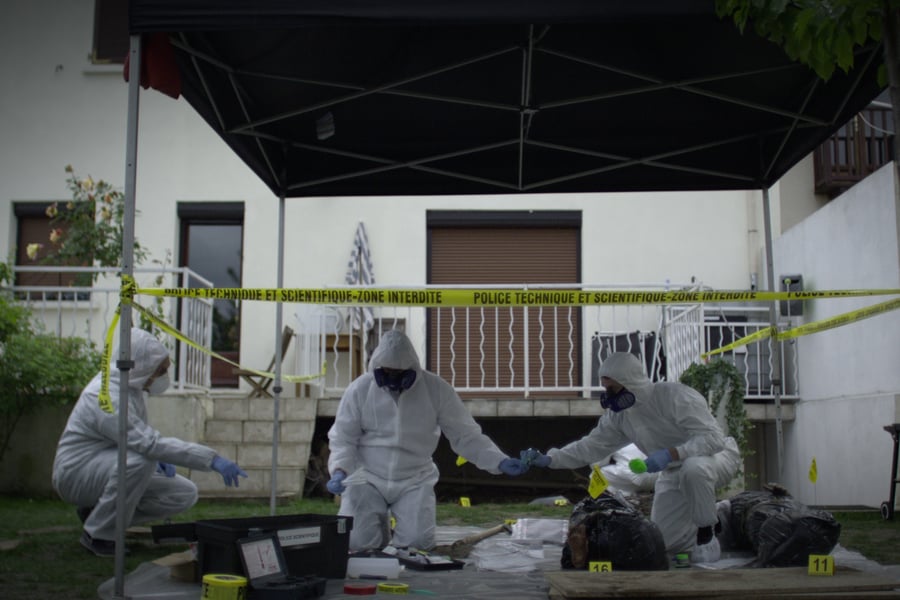The O.G. of TV true crime has returned. Before there was Making a Murderer, Tiger King, The Jinx, and Serial, the nation’s fix for real-life murder tales came in weekly doses courtesy of Unsolved Mysteries, which ran interrupted from 1987 to 2002. Since the series left airwaves, the genre has grown into a powerhouse: Some networks dedicate their entire programming slate to it (hi, Oxygen), and streaming services rely on true-crime for viral hits.
Yet, 33 years after its debut, old episodes of Unsolved Mysteries remain a profoundly bingeable experience, thanks largely to its cheesy recreations filmed on a B-movie budget that made no attempt to cast actors with even a passing resemblance to the person they were portraying. And of course there was the series’ longtime host Robert Stack — mothballed in film-noir mode — unraveling each mystery with his patented matter-of-fact narration.
Much of the original series’ corniness has manifested in the shows it inspired: Dateline’s Keith Morrison has perfected Stack’s schlock schtick, while Cold Justice and The First 48 put a realistic spin on the genre’s formulaic approach. To survive in today’s crowded and competitive battleground of true crime, Unsolved Mysteries has ditched its much-aped style and resurfaced on Netflix with a gritty reboot.
So what’s changed? Obviously, Stack’s narration is gone, as the actor died in 2003. Now, it’s bereaved family members, witnesses, and friends who relay each story. The cringe reenactments have vanished. The original series’ habit of stuffing multiple mysteries into a commercial-filled hour is also no more, as each of the new show’s first six episodes from Netflix’s 12-episode season focuses on a single mystery. Like its predecessor, the reboot also leans heavily on murder and disappearances, save for the occasional palate cleanser in the form of the extraterrestrial and paranormal. (Thankfully — in the first six installments, anyway — there are no episodes dedicated to miracles, psychics, the Bermuda Triangle, or ghosts.) Another welcome change: The reboot tones down the violence-porn aspects of the original, especially in the cases involving women.
The mysteries here are all unsolved, although there is a variance to their unsolved-ness. The first episode is the most intriguing and most likely to send Reddit detectives streaking for their keyboards: The suicide (maybe murder?) of Rey Rivera, who jumped (was pushed?) to his death off the roof of Baltimore’s famed Belvedere Hotel in 2006. The suicide (as ruled by coroners) in itself isn’t that mysterious. However, the episode presents a physical impossibility in the manner of how Rivera torpedoed to his death, as no mortal man could angularly plummet from the supposed spot of his departure to where his body ultimately landed. (A more plausible explanation than what is posited: The “Berkshire UFO” from Episode 4 beamed him up and dropped him.)
Having been gone two decades — not counting the short-lived Dennis Farina-hosted revival — some new Unsolved Mysteries episodes revisit recent infamous true-crime incidents, like watching a riveting small-screen adaptation of a well-detailed Wikipedia page. While the retelling of these stories for the umpteenth time still fascinates, the actual mystery is, for the most part, solved. Like in the episode dedicated to France’s “House of Terror” family annihilation: The mystery isn’t why the patriarch Xavier Dupont de Ligonnès killed his wife and four children, but if he’s still alive after he’s seen on surveillance cameras walking off into the wilderness, rifle in tow. (Although his body was never found, the show suggests he likely died by suicide there, despite the occasional false sighting.) And while the UFO episode — about a mass sighting and possible alien abduction over Massachusetts in 1969 — presents firsthand accounts, one still half-expects a coiffed dude to pop up at any moment and exclaim “Aliens!”
The other three episodes — about unanswered murders and disappearances in small-town America — further cement what makes Unsolved Mysteries, and the true-crime genre itself, so tantalizing: At any time, on any day, the true-crime voyeur can suddenly become the true-crime victim. In one now-extremely topical episode — about the death of Alonzo Brooks, a black man, following a house party in an all-white rural Kansas town — the reboot sharply examines the still-searing racial divide in Red State America, right down to the local police’s reluctant response to Brooks’ initial disappearance; his death was ultimately ruled “suspicious,” but no suspects were ever arrested. It’s an issue the original series would never dare tackle.
Unsolved Mysteries has returned to a television landscape that didn’t necessarily need it, where a random Saturday night serves up true-crime offerings like Killer Couples, Killer Kids, Forensic Files and Accident, Suicide or Murder. But does the O.G. still have something left to teach the genre it helped create? Yes. Case closed.



































